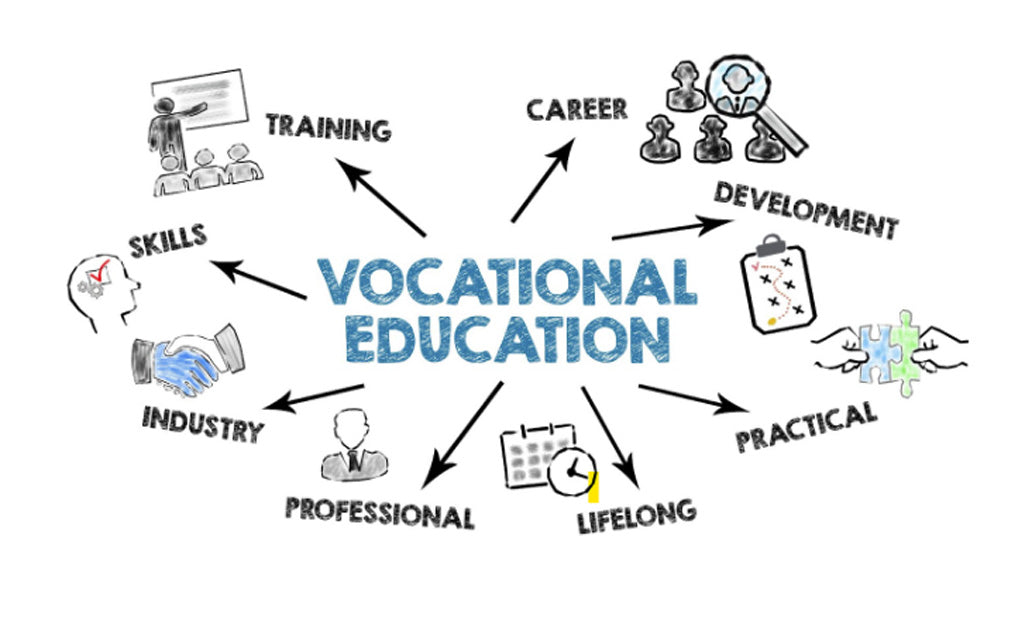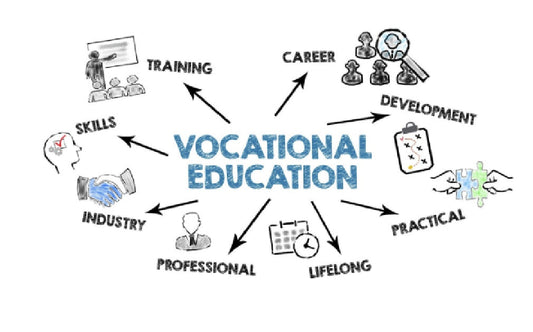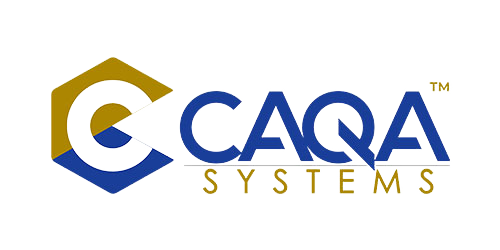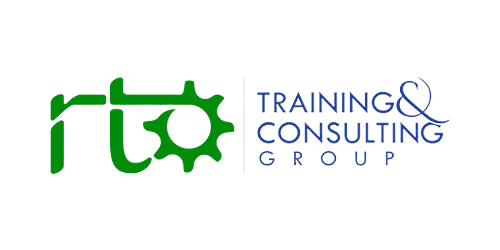The Strategic Importance of VET in Today's Rapidly Evolving Economy
In an era defined by rapid technological advancements and evolving industry landscapes, the critical importance of Vocational Education and Training (VET) has never been more pronounced. As traditional career pathways transform and new industries emerge, VET stands as a cornerstone in addressing persistent skills shortages, fostering economic growth, and promoting social mobility across Australia and globally. Unlike traditional academic pathways that often emphasise theoretical knowledge, VET programs are designed to equip individuals with practical, industry-relevant skills, enabling them to seamlessly transition into the workforce with capabilities that employers desperately need. However, despite its pivotal role in workforce development, the VET sector faces numerous challenges that demand urgent attention and strategic intervention from policymakers, industry leaders, and educational institutions.
The value proposition of vocational education extends far beyond simply providing alternative educational pathways. VET represents a strategic response to some of the most pressing economic and social challenges facing modern societies: persistent skills gaps that hamper productivity, the need for continuous workforce adaptation in response to technological change, and the imperative to create more inclusive pathways to meaningful employment. As economies increasingly demand specialised technical skills alongside adaptability and practical problem-solving abilities, VET's importance as a key component of national human capital development strategies continues to grow. Understanding both the potential and the challenges facing this sector has become essential for anyone concerned with economic prosperity and social inclusion.
Bridging Critical Skills Gaps Through Targeted Training
One of the most pressing issues confronting the global economy, and Australia's in particular, is the widening skills gap across numerous industries. As sectors evolve and new technologies emerge—from advanced manufacturing and renewable energy to healthcare and digital services—the demand for specialised skills significantly outpaces the supply of qualified professionals. This discrepancy not only hinders economic productivity and innovation but also contributes to unemployment and underemployment, creating a paradoxical situation where job vacancies remain unfilled while job seekers struggle to find work.
VET plays a crucial role in bridging this gap by providing targeted training programs that align with specific industry needs. By collaborating closely with employers and industry associations, effective VET institutions develop curricula that reflect the latest technological advancements and emerging skill requirements rather than generic or outdated competencies. This industry-led approach ensures that graduates possess the practical capabilities necessary to thrive in today's competitive job market from day one of employment. For example, specialised VET programs in cybersecurity, renewable energy installation, or advanced manufacturing techniques can rapidly produce graduates with precisely the skills that represent current bottlenecks in workforce capability.
The responsive nature of well-designed VET qualifications allows for much faster adaptation to changing workforce needs compared to traditional higher education pathways. While university programs typically require years to develop and implement curriculum changes, the VET sector can—when operating optimally—update courses and create new credentials in months rather than years. This agility makes VET an essential component of any comprehensive strategy to address skills shortages, particularly in rapidly evolving technical fields where the half-life of skills continues to decrease. By functioning as a responsive skills pipeline aligned with actual labor market demands, effective VET systems serve as critical economic infrastructure rather than simply educational institutions.
Driving Economic Growth Through Innovation and Entrepreneurship
Beyond addressing immediate skills gaps, VET contributes significantly to broader economic growth by fostering innovation and entrepreneurship across diverse sectors. By providing individuals with comprehensive technical skills alongside practical business knowledge, high-quality vocational programs empower graduates to not only fill existing positions but also to create new economic opportunities. Trades-based entrepreneurs who establish small businesses after completing vocational qualifications represent a significant driver of job creation, economic diversification, and local economic development, particularly in regional and rural communities.
Furthermore, effective VET programs increasingly incorporate elements of design thinking, problem-solving, and critical analysis alongside technical competencies. This integrated approach develops graduates who can adapt to changing market demands and develop innovative solutions within their fields of expertise. For instance, construction trades graduates with sustainability training may pioneer more energy-efficient building techniques, while culinary program graduates might develop new food products or service models that create entire market categories. The practical innovation that emerges from vocational training often differs from university-driven innovation—focusing on applied improvements and practical solutions rather than theoretical breakthroughs—but is no less valuable to economic advancement.
The economic impact of VET extends to productivity improvements within existing businesses as well. When employees gain specialised skills through vocational training, they can implement more efficient processes, reduce errors and waste, operate advanced equipment effectively, and contribute to continuous improvement initiatives. This productivity enhancement represents a direct economic benefit that compounds over time as skilled workers train colleagues and establish new benchmarks for performance. In industries facing significant disruption or international competition, this productivity advantage can determine whether businesses—and sometimes entire sectors—remain viable in the global marketplace.
Promoting Social Mobility and Inclusive Economic Participation
In addition to its economic benefits, VET plays a crucial role in promoting social mobility by providing accessible pathways to meaningful employment for individuals from diverse backgrounds. For many Australians, traditional academic routes may present significant barriers due to financial constraints, learning preferences, previous educational experiences, or family circumstances. VET offers alternative pathways to successful careers by providing flexible, practical training programs that lead directly to employment opportunities with substantial earning potential.
By focusing on competency-based assessment and hands-on skills development rather than abstract theoretical knowledge, VET creates opportunities for learners with diverse strengths and learning styles to excel. This inclusivity is particularly important for individuals who may have struggled in conventional academic environments but possess substantial practical intelligence and technical aptitude. The emphasis on demonstrated capability rather than credentialism opens doors for those who might otherwise be excluded from high-skill careers, creating a more equitable skills development ecosystem.
This inclusivity extends to marginalised communities that historically have faced barriers to economic participation. For indigenous Australians, migrants and refugees, people with disabilities, and those from socioeconomically disadvantaged backgrounds, quality vocational pathways can provide targeted routes to economic self-sufficiency and career advancement. When designed with cultural sensitivity and appropriate support mechanisms, VET programs can serve as powerful vehicles for social inclusion, helping to address persistent inequalities in workforce participation and income distribution. The economic security that comes from in-demand technical skills can transform not just individual lives but entire communities, breaking intergenerational cycles of disadvantage.
Challenging Perceptions: Addressing the Status of Vocational Pathways
Despite its clear economic and social value, the VET sector faces numerous challenges that impede its ability to fully realise its potential. One of the most persistent obstacles is the perception that vocational education represents a "second-class" option compared to university pathways. This stigma—often reinforced by school career counselling practices, media representations, and social attitudes—discourages many talented individuals from pursuing VET programs, leading to shortages of skilled workers in critical industries despite excellent employment prospects and earning potential.
Addressing this perception requires a coordinated effort to promote the value of vocational education and highlight the diverse career opportunities it offers. Public awareness campaigns showcasing successful VET graduates across various industries—including those who earn more than many university graduates—can help reshape community attitudes. Similarly, providing better career information in schools that accurately represents the economic returns and advancement possibilities in technical fields can help students and parents make more informed decisions based on actual outcomes rather than status considerations.
Industry leaders also play a crucial role in elevating the status of vocational qualifications through their hiring practices, remuneration structures, and public advocacy. When employers clearly value technical expertise and provide visible career progression pathways for VET graduates, they send powerful signals about the value of these qualifications. Similarly, professional associations that create parity of esteem between vocational and higher education pathways within their credentialing frameworks contribute to changing perceptions of these different but equally valuable educational approaches.
Funding and Resource Allocation: Investing in Quality
Another significant challenge facing the VET sector involves funding and resource allocation. In many jurisdictions, vocational programs receive significantly less public investment per student than university education, despite their critical economic role. This funding disparity often leads to inadequate facilities, outdated equipment, and difficulties attracting and retaining qualified instructors with current industry experience. The resulting quality issues then reinforce negative perceptions, creating a vicious cycle that undermines the sector's effectiveness.
Breaking this cycle requires governments and industry stakeholders to prioritise investment in VET infrastructure, educator professional development, and curriculum resources. This involves not just increasing overall funding but also implementing sustainable financing models that recognise vocational education's distinctive delivery requirements. High-quality technical training necessarily involves lower student-teacher ratios, specialised equipment, consumable materials, and facilities that simulate workplace environments—all of which entail higher per-student costs than lecture-based education.
Strategic partnerships between government, industry, and educational providers can help leverage resources more effectively and ensure that investments target actual economic priorities. Industry co-investment in training facilities, equipment donations, staff professional development, and curriculum development can extend the impact of public funding while ensuring training remains relevant to workplace needs. Such partnerships also create stakeholder commitment to program quality and graduate outcomes, establishing accountability mechanisms that drive continuous improvement.
Adapting to Technological Change: Maintaining Relevance
The accelerating pace of technological change presents both opportunities and challenges for the VET sector. To remain relevant, vocational programs must continuously evolve to incorporate emerging technologies, methodologies, and industry practices. This requires not just updating curriculum content but fundamentally rethinking how technical skills are taught and assessed in an era where specific technologies may become obsolete during a student's training period.
Effective responses to this challenge include greater emphasis on foundational technical principles alongside specific applications, increased focus on adaptability and learning-to-learn capabilities, and modular curriculum structures that allow for the rapid updating of specific components without redesigning entire qualifications. Digital simulation technologies, augmented and virtual reality, and other educational technologies can help students gain experience with expensive or emerging equipment that might otherwise be inaccessible, while industry placements and project-based learning create opportunities to work with the latest tools in actual workplace contexts.
Educator capability represents a particular challenge in this rapidly evolving environment. VET instructors must simultaneously maintain currency in their technical field, develop pedagogical expertise, and navigate complex regulatory requirements—a combination that few professionals can achieve without substantial institutional support. Innovative approaches such as dual appointments between industry and education, teaching teams that combine pedagogical and technical specialists, and structured industry placement programs for educators can help bridge this gap and ensure that students learn from instructors with current, relevant expertise.
The Essential Role of Industry Engagement
The quality and relevance of VET programs are fundamentally contingent on meaningful industry engagement throughout the educational process. Employers and industry bodies must play active roles in defining required competencies, shaping curriculum content, providing authentic learning opportunities through placements and projects, assessing student capabilities, and recognising qualifications through hiring practices. When this engagement is superficial or inconsistent, vocational programs risk drifting away from actual workplace requirements, diminishing their value to both students and employers.
Effective industry engagement extends beyond occasional consultation to structurally embed employer perspectives and requirements throughout the educational process. Industry-led training models—such as apprenticeships, internships, and cooperative education programs—represent particularly powerful approaches that integrate workplace experience with structured learning. These models not only ensure relevance but also facilitate the development of professional networks and workplace cultural knowledge that significantly enhance employment outcomes.
Digital technologies increasingly enable new forms of industry engagement that overcome traditional barriers of geography and scheduling. Virtual industry projects, remote mentoring, simulated workplace environments, and asynchronous collaboration tools allow even geographically isolated programs to connect students with industry expertise. These approaches can be particularly valuable in specialised fields where relevant employers may be concentrated in specific locations, enabling vocational programs to prepare students for opportunities beyond their immediate region.
Embracing Lifelong Learning and Continuous Skill Development
As technological change accelerates and career paths become increasingly non-linear, the VET sector must embrace lifelong learning models that support individuals throughout their working lives rather than focusing exclusively on initial qualifications. Traditional approaches that front-load education before career commencement have become increasingly inadequate in an environment where workers can expect to change roles, employers, and even industries multiple times during their careers.
Responsive VET systems are developing more flexible approaches to meet these evolving needs: micro-credentials that allow for targeted skill development without full qualification commitment; modular programs that enable learners to customise their educational pathways; recognition of prior learning processes that acknowledge existing capabilities; and blended delivery models that accommodate the scheduling constraints of working adults. These innovations make continuous skill development accessible to existing workers while creating more permeable boundaries between work and learning.
This shift toward lifelong learning necessitates new thinking about VET's role and structure. Rather than viewing vocational education as a one-time preparation for work, effective systems position themselves as ongoing partners in individual and organisational capability development. This expanded mission requires different financing models, delivery approaches, and success metrics than traditional pre-employment training, along with closer integration between VET providers and industry human resource development functions.
International Collaboration and Global Skills Mobility
The increasingly global nature of labor markets and supply chains creates both challenges and opportunities for VET systems. International collaboration and knowledge sharing among vocational education providers can accelerate innovation, enhance program quality, and develop shared approaches to common challenges. By exchanging curriculum resources, assessment methodologies, and delivery innovations, providers can leverage global expertise to enhance local outcomes while avoiding duplication of development efforts.
International skills recognition frameworks play a particularly important role in facilitating worker mobility across borders while maintaining quality standards. When vocational qualifications are designed with reference to internationally recognised competency frameworks, graduates gain access to global employment opportunities. At the same time, employers can more confidently assess the capabilities of workers trained in different systems. This international portability becomes increasingly valuable as industries operate across national boundaries and skilled workers seek opportunities in global labor markets.
For Australia specifically, the international dimension of VET includes significant export opportunities alongside the potential for knowledge transfer. Australian vocational education has established a strong international reputation in many fields, creating demand for Australian qualifications, curriculum resources, and quality assurance approaches. The strategic development of these export activities can generate economic benefits while raising Australia's profile in key international markets and strengthening relationships with regional partners.
The Path Forward for VET Excellence
Vocational Education and Training stands as an essential component of Australia's education and employment ecosystem, with the potential to address critical skills shortages, drive economic growth, and create more inclusive pathways to prosperity. Realising this potential, however, requires coordinated action to address the sector's challenges while building on its strengths. Strategic priorities for advancing VET excellence include:
-
Elevating the status and recognition of vocational pathways through coordinated advocacy, improved career information, and clear articulation of employment outcomes
-
Developing sustainable funding models that reflect the true costs of quality technical training while providing stability for long-term planning and investment
-
Strengthening industry partnerships that ensure training relevance while creating authentic learning opportunities and employment pathways
-
Embracing technological innovation in both what is taught and how it is delivered, ensuring graduates possess both current technical skills and adaptability for future changes
-
Creating more flexible, modular approaches to skill development that support lifelong learning and continuous professional development
-
Building international connections that facilitate knowledge sharing, qualification recognition, and workforce mobility
By addressing these priorities through collaborative action between government, industry, and education providers, Australia can develop a world-leading VET system that serves as a cornerstone of economic prosperity and social inclusion. The future of work demands nothing less than vocational education excellence, where practical skills, technical knowledge, and innovation capabilities come together to create both individual opportunity and collective advancement. As traditional distinctions between education and work continue to blur, VET's integration of learning and doing positions it to play an increasingly central role in how we prepare people for meaningful contributions to the economy of tomorrow.


































